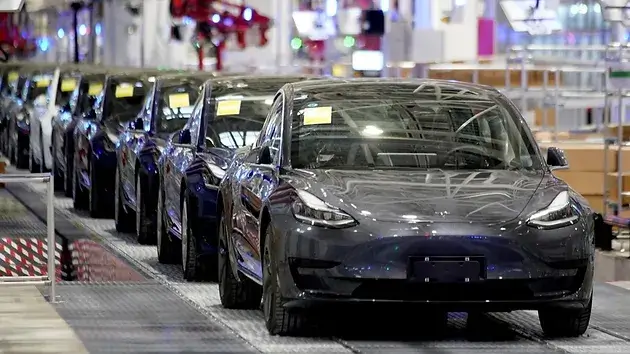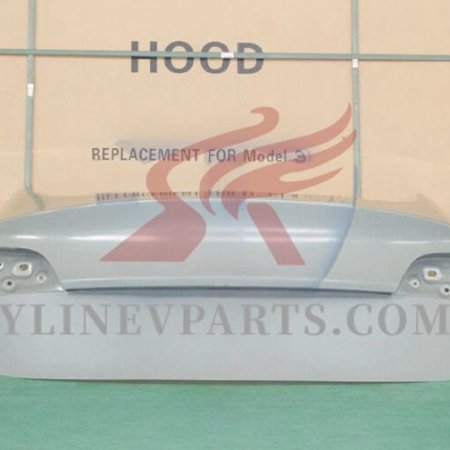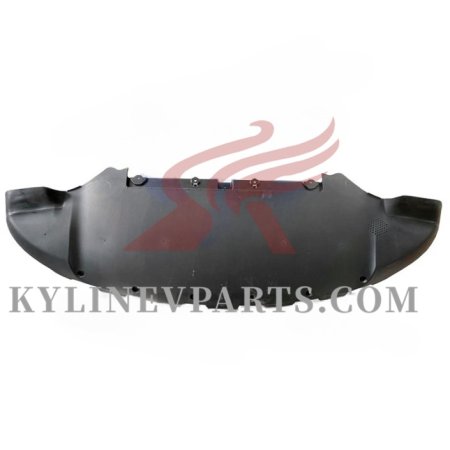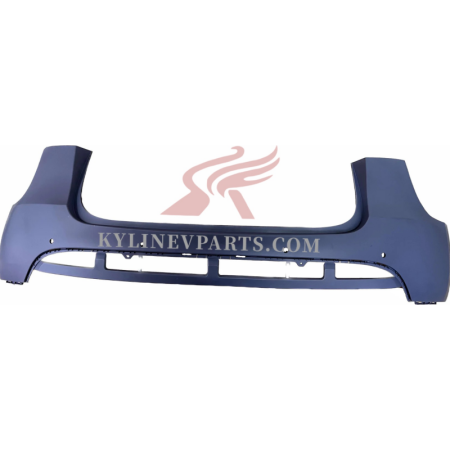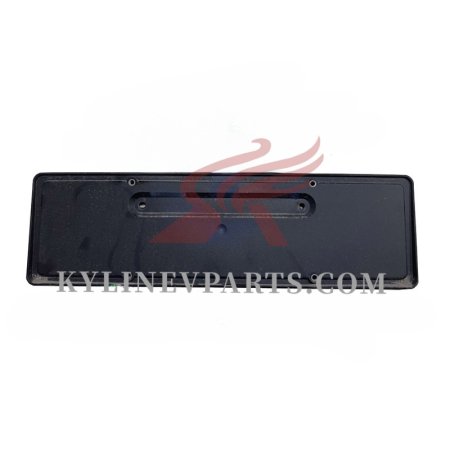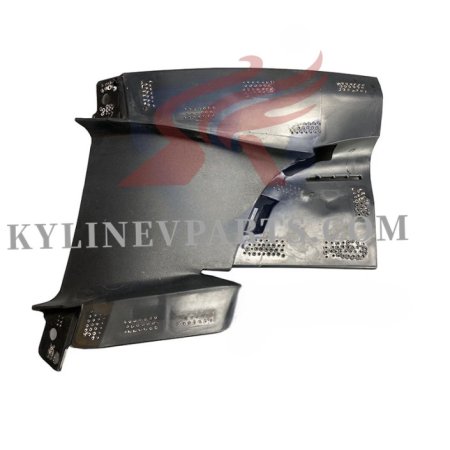Overview of Tesla’s Global Manufacturing Footprint
Tesla, Inc., an American leader in electric vehicles (EVs) and clean energy solutions, has crafted a remarkable global manufacturing footprint. Driven by a mission to accelerate the world’s transition to sustainable energy, Tesla’s network of Gigafactories plays a pivotal role in its production strategy. This article explores the key manufacturing locations within Tesla’s global network, emphasizing their size, function, and technological advancements. Understanding Tesla’s manufacturing network is vital for consumers, investors, and industry professionals keen on grasping the nuances of modern automotive and energy production.
What This Article Covers
This comprehensive overview will dive into Tesla’s major manufacturing facilities worldwide, including:
Gigafactory Nevada (USA): A deep dive into its role in producing batteries and powertrains.
Gigafactory Shanghai (China): An examination of its significance in Tesla’s global expansion and adaptation to the Chinese market.
Gigafactory Berlin (Germany): An analysis of its impact on European operations and technological integration.
Gigafactory Texas (USA): Insights into its strategic importance and regional influence.
Additionally, we will explore other notable Tesla facilities, the intricacies of the manufacturing process, and supply chain logistics. We’ll also assess how these elements affect consumers and discuss future developments.
Major Tesla Manufacturing Locations
Tesla’s global manufacturing network is essential for scaling production and meeting the increasing demand for electric vehicles (EVs) and clean energy solutions. Each Gigafactory plays a distinct role in Tesla’s production ecosystem. Here’s an exploration of Tesla’s major manufacturing locations, their features, products, and overall impact.
Gigafactory Nevada (USA)
Facility Overview
Located in Storey County, Nevada, Gigafactory Nevada stands as a monumental achievement in manufacturing. Spanning approximately 5.4 million square feet, it ranks among the largest buildings in the world by footprint. This facility is pivotal in Tesla’s production strategy, focusing on:
- Location and Size: The vast area of Gigafactory Nevada supports large-scale operations, facilitating efficient production processes and significant output.
- Key Components Produced: The factory specializes in producing lithium-ion battery cells, battery packs, and powertrains. These components are critical for Tesla’s electric vehicles and energy storage solutions.
- Technological Advancements: Featuring advanced automation and robotics, the facility enhances production efficiency while reducing costs. Learn more about Gigafactory Nevada.
Impact on Tesla’s Operations
- Contribution to Production: Gigafactory Nevada is crucial in Tesla’s battery supply chain, helping to meet the surging demand for its electric vehicles and energy products.
- Local and Global Impact:Locally, the facility has created thousands of jobs and contributed significantly to the regional economy. Globally, it strengthens Tesla’s supply chain, ensuring a consistent supply of essential components.
Gigafactory Shanghai (China)
Facility Overview
Opened in late 2019, Gigafactory Shanghai represents Tesla’s strategic entry into one of the world’s largest automotive markets. This facility is instrumental in Tesla’s international expansion, designed to:
- Role in Global Expansion: As Tesla’s first wholly-owned factory outside the U.S., Gigafactory Shanghai underscores the company’s commitment to expanding its global footprint.
- Products and Parts: It manufactures the Model 3 and Model Y vehicles, along with various components tailored to the Chinese market.
- Adaptations for Local Market: The factory is optimized to comply with local regulations and consumer preferences, ensuring that Tesla’s vehicles meet Chinese standards. Discover more about Gigafactory Shanghai.
Market Influence
- Effects on Supply Chain: The Shanghai factory significantly cuts logistics costs and delivery times for Chinese customers, enhancing Tesla’s market presence.
- Regional Economic Benefits: It has spurred local employment and contributed to the economic growth of the Shanghai region.
Gigafactory Berlin (Germany)
Facility Overview
Gigafactory Berlin, also known as Giga Berlin, marks Tesla’s entry into European manufacturing. Located in Grünheide, Germany, it supports Tesla’s European strategy by:
- Key Features and Capabilities: The factory is equipped with advanced production technologies and emphasizes sustainability and efficiency.
- Products Manufactured: Giga Berlin focuses on producing the Model Y and other future models, alongside battery cells and powertrains.
- Technological Integration: The facility incorporates innovative manufacturing technologies to streamline production processes. Explore Gigafactory Berlin.
European Market Impact
- Impact on Production and Supply: Giga Berlin enhances Tesla’s European production capabilities, reducing reliance on imports and improving supply chain efficiency.
- Economic and Environmental Benefits: It generates local jobs and supports sustainable practices through its focus on renewable energy and efficient manufacturing processes.
Gigafactory Texas (USA)
Facility Overview
Gigafactory Texas, located in Austin, is one of Tesla’s most ambitious projects, central to its U.S. market strategy:
- Facility Details: Spanning over 2,500 acres, Giga Texas is designed for large-scale vehicle production and supports Tesla’s expansion plans.
- Parts and Components: The facility manufactures the Cybertruck, Model Y, and future vehicle models, as well as various components.
- Technological Features: Giga Texas integrates advanced production technologies, including cutting-edge robotics and automation systems. Learn about Gigafactory Texas.
Strategic Importance
- Role in U.S. Production: The Texas factory is crucial for scaling up production and meeting the demand for Tesla’s new models in the U.S. and globally.
- Regional Impact: It plays a significant role in local job creation and economic development, benefiting the Austin community.
Other Notable Facilities
In addition to the major Gigafactories, Tesla operates several other manufacturing and assembly sites globally, which are integral to its production and supply chain:
- Additional Manufacturing Sites: Facilities in Tilburg (Netherlands) and Fremont (California) support various aspects of Tesla’s production network.
- Roles and Contributions: Each site plays a unique role, contributing to Tesla’s overall efficiency and global reach.
Explore Tesla’s global manufacturing network to learn more about how these facilities support Tesla’s mission and operations.
The Manufacturing Process
Tesla’s Manufacturing Process: A Comprehensive Overview
Tesla’s manufacturing process is a marvel of modern engineering, blending advanced technologies, innovative techniques, and rigorous quality control measures. This section takes you through the intricate steps of Tesla’s production, from the initial sourcing of raw materials to the final assembly of vehicles. Discover how Tesla’s commitment to cutting-edge technology and sustainability is shaping the future of automotive manufacturing.
Production Techniques and Technologies
From Raw Materials to Finished Parts
Tesla’s production journey is a sophisticated process that begins with raw material sourcing and culminates in the creation of high-quality automotive components. Here’s a closer look:
Raw Material Sourcing: Tesla’s production process starts with sourcing essential materials like lithium, nickel, and cobalt, which are critical for battery cells. The company sources these materials globally, ensuring that its supply chain adheres to sustainable and ethical practices. For instance, Tesla is dedicated to responsible mining practices and reducing the environmental impact of its raw material extraction. Learn more about Tesla’s sourcing practices.
Component Manufacturing: Once raw materials are sourced, they are processed and transformed into critical components such as battery cells, powertrains, and more. At Tesla’s Gigafactories, advanced manufacturing techniques are employed. Die-casting, a process where molten metal is poured into a mold to form parts and precision machining are just a couple of methods used to produce high-quality components. These techniques ensure that every part meets Tesla’s stringent quality standards.
Assembly: After component manufacturing, these parts are transported to assembly plants where they are meticulously integrated into finished vehicles. This assembly process involves fitting together various elements, including battery packs, powertrains, and vehicle bodies. Each vehicle undergoes a detailed assembly process to ensure that all parts fit perfectly and function optimally.
Technologies and Methods
Tesla’s commitment to innovation is evident in its use of cutting-edge technologies that enhance production efficiency and product quality:
Automation and Robotics: Tesla employs advanced robotics to automate repetitive tasks, which boosts production speed and consistency. A standout example is the Gigapress, a colossal die-casting machine that produces large vehicle components in a single piece. This innovation reduces the number of parts needed and minimizes assembly steps. By utilizing robotics, Tesla can ensure that components are produced with high precision and reliability. Explore more about the Gigapress.
Machine Learning and AI: Machine learning algorithms play a crucial role in optimizing Tesla’s production schedules and predicting maintenance needs. By analyzing vast amounts of data, these algorithms help Tesla enhance operational efficiency, minimize downtime, and streamline the manufacturing process. This data-driven approach ensures that production remains smooth and responsive to potential issues.
Sustainable Manufacturing: Sustainability is at the heart of Tesla’s manufacturing ethos. The company integrates various sustainable practices into its production process, such as using renewable energy sources and implementing material recycling programs. Tesla aims to reduce its environmental footprint through these efforts, aligning with its broader mission of promoting clean energy and reducing greenhouse gas emissions. Learn about Tesla’s sustainability efforts.
Tesla’s manufacturing process exemplifies its commitment to innovation, efficiency, and sustainability. By integrating advanced technologies and maintaining high standards throughout its production cycle, Tesla not only advances automotive technology but also supports its mission to lead in sustainable energy solutions.
The Supply Chain and Logistics at Tesla
Tesla’s supply chain and logistics operations are central to its global manufacturing prowess, ensuring that parts are efficiently produced, transported, and delivered. These processes are crucial for maintaining Tesla’s commitment to quality and timely production. This section delves into how Tesla manages the transportation of parts, oversees its global supply chain, and leverages innovations to boost efficiency.
Transportation of Parts
Logistics Overview
Tesla’s logistics network is a well-oiled machine designed to support its extensive manufacturing operations. It ensures that components move from production sites to assembly plants and ultimately to customers with precision and reliability. Here’s how Tesla orchestrates its transportation processes:
Transportation Methods: Tesla employs a diverse array of transportation modes to handle its parts. Rail, truck, and sea freight are utilized depending on the type of component and its destination. For example, battery packs and powertrains from the Gigafactories are often transported using specialized trucks designed to ensure the safety and integrity of these sensitive components. This multi-modal approach allows Tesla to optimize delivery times and costs. Learn more about Tesla’s logistics strategies.
Logistics Challenges: Transportation comes with its set of challenges—supply chain disruptions, timing issues, and the need to maintain the quality of delicate components. To tackle these, Tesla employs advanced tracking systems and flexible logistics solutions. Real-time monitoring helps mitigate delays, while rigorous quality control measures ensure that components arrive in top condition.
Supply Chain Management
Global Supply Chain Strategies
Managing Tesla’s intricate global supply chain is critical for maintaining production efficiency and meeting market demands. Here’s a look at how Tesla navigates its supply chain landscape:
Management Practices: Tesla uses a vertically integrated supply chain model, overseeing multiple stages from raw material sourcing to component manufacturing. This control enables Tesla to maintain high standards of quality and manage costs effectively. By keeping a tight grip on production processes, Tesla can swiftly adapt to changes and address potential issues before they escalate. Explore Tesla’s supply chain management.
Challenges and Solutions: Managing global supplier relationships, addressing production bottlenecks, and adapting to market fluctuations are significant challenges. Tesla addresses these by forming strategic partnerships, diversifying its supplier base, and investing in cutting-edge supply chain technologies. These strategies help minimize risks and enhance overall efficiency.
Supply Chain Innovations
Tesla is at the forefront of supply chain innovation, constantly integrating new technologies and practices to improve efficiency:
Innovative Practices: Tesla leverages advanced supply chain technologies like real-time inventory tracking and predictive analytics. These innovations are crucial for accurately forecasting demand, reducing lead times, and minimizing stockouts. By employing these technologies, Tesla ensures a more responsive and agile supply chain. Read about supply chain innovations at Tesla.
Impact on Efficiency: The adoption of these advanced practices not only streamlines operations but also helps Tesla reduce costs and swiftly adapt to market changes. Enhanced operational efficiency translates to quicker production cycles, better resource management, and a stronger competitive edge.
Impact on Consumers
Tesla’s manufacturing and supply chain operations profoundly influence various aspects of the consumer experience, from delivery times and parts availability to the quality and cost of products. Understanding these effects can provide valuable insights for consumers considering Tesla vehicles or services. This section explores how Tesla’s manufacturing processes shape these key areas.
Effects on Delivery Times and Availability
Manufacturing Location Impact
The strategic positioning of Tesla’s Gigafactories around the globe plays a crucial role in determining how quickly consumers receive their vehicles and parts. Here’s how:
Delivery Times: Tesla’s global network of Gigafactories is strategically located to optimize delivery times. For instance, Gigafactory Shanghai’s proximity to the burgeoning Chinese market significantly shortens the delivery window for vehicles and components within the region. Similarly, Gigafactory Texas streamlines delivery efficiency for U.S. customers by producing vehicles closer to their final destinations. This localized production reduces shipping times and enhances customer satisfaction.
Parts Availability: Localized manufacturing not only speeds up vehicle deliveries but also improves parts availability. By producing essential components at regional facilities, Tesla can quickly respond to supply needs and reduce the risk of parts shortages. This approach ensures that replacement parts and maintenance services are more accessible to Tesla owners, minimizing downtime and inconvenience. Quality and Cost Implications
Consumer Experience
Tesla’s manufacturing network significantly impacts both the quality of its products and their cost, which in turn affects the overall consumer experience:
Quality of Parts: Tesla maintains rigorous quality control measures throughout its manufacturing process to ensure high standards for each vehicle and component. Advanced testing and inspection protocols at Tesla’s Gigafactories are designed to uphold reliability and durability, giving consumers confidence in the quality of their purchase. Tesla’s commitment to excellence is reflected in its consistent delivery of high-quality products.
Cost Considerations: Tesla’s innovative manufacturing techniques and economies of scale contribute to more efficient production processes and help keep costs down. However, the final price of Tesla vehicles and parts can still be influenced by factors such as raw material costs and advanced technologies. Additionally, Tesla’s direct-to-consumer sales model eliminates traditional dealership markups, potentially offering more competitive pricing to buyers.
Where can you buy Tesla Parts from the Unofficial Channel?
Kylin EV Parts Ltd is located in Guangzhou, the hub of China’s automotive parts industry. Established in 2013, we focus on the supply chain of new energy automotive parts, providing brand solutions for entire vehicle series from a screw to exterior components, connecting the upstream and downstream supply chains, and forming strategic alliances with production factories through customization, alliance. Adhering to the principle of ensuring the quality of a component is equal to protecting the safety of a family.
In 2022, our international trade department was established, focusing on the integration of Tesla, VW, and BYD, as well as aftermarket modifications. As China’s premier B2B supplier, we offer a comprehensive service in integrating EV spare parts for numerous foreign sellers, both online and offline.
We extend a cordial invitation to collaborate with foreign dealers and explore OEM and ODM partnerships for our products. With our commitment to the most professional service, the highest quality products, and the most reasonable prices, we endeavor to provide unparalleled support.

